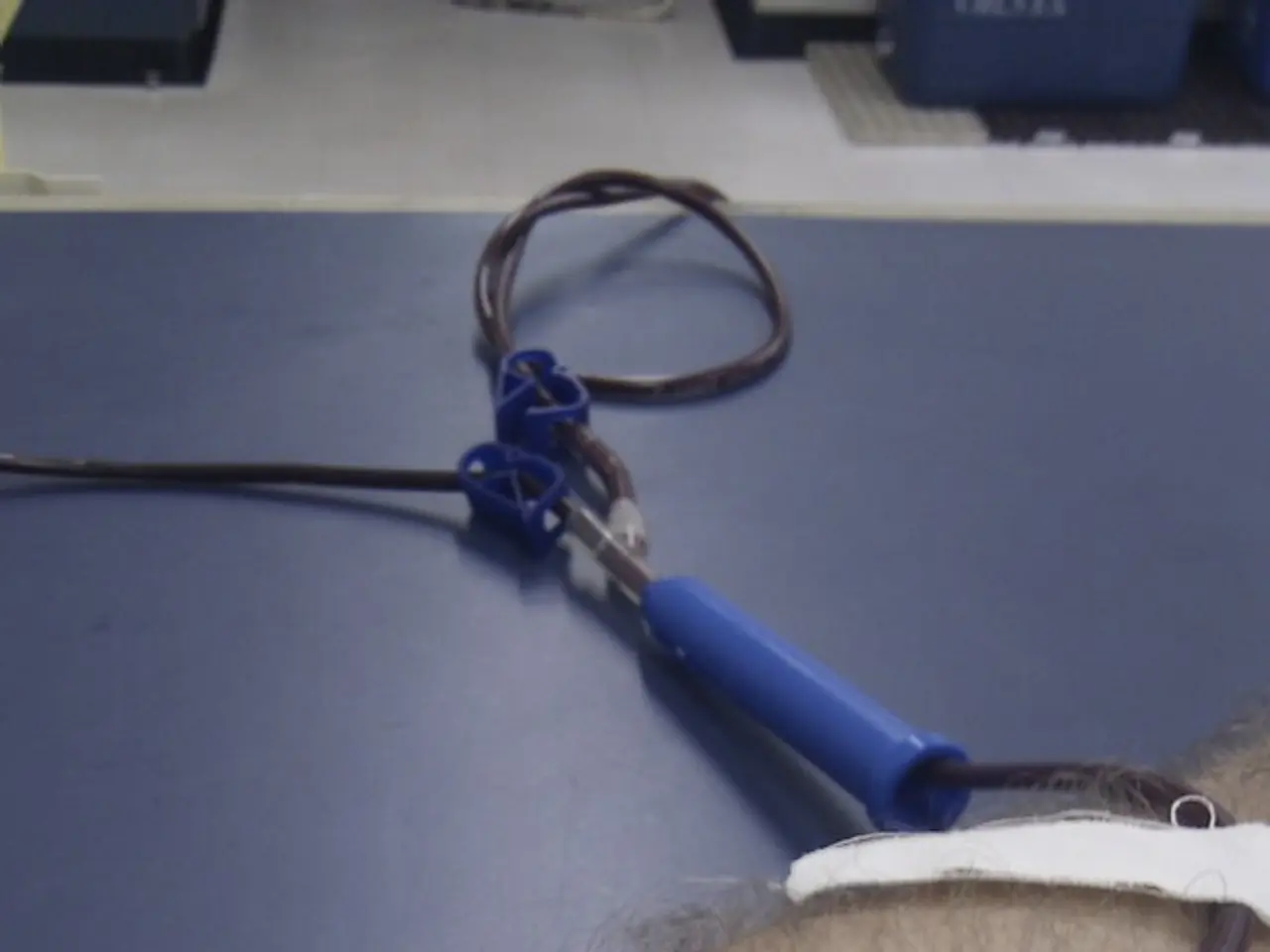Sclerotherapy Treatment: Information on Conditions Treated, Expenses, Post-Procedure Care, and Outcomes
Sclerotherapy is a popular medical procedure that is primarily used to treat varicose and spider veins, common issues affecting the legs. However, this versatile treatment can also be applied to a range of other conditions involving abnormal blood vessels.
Beyond its typical applications, sclerotherapy may be considered for conditions such as hemangiomas, lymphatic malformations, Arteriovenous Malformations (AVMs), and even the treatment of malformed lymph vessels and hydroceles. While not the first-line treatment for these conditions, its use is highly dependent on the specific case and the expertise of the healthcare provider.
For instance, hemangiomas - benign growths of blood vessels - can be treated with sclerotherapy in some cases, especially if they are problematic or aesthetically concerning. Similarly, sclerotherapy may be used in combination with other treatments for certain types of lymphatic malformations and AVMs.
It's important to note that sclerotherapy is an outpatient procedure that lasts 30-45 minutes. During the treatment, a doctor uses a fine needle to inject a sclerotherapy solution into the vein. Afterward, it's crucial to wear compression stockings to aid recovery and prevent further varicose veins from forming.
Research suggests that sclerotherapy is successful in around 70% of cases, although multiple treatments may be required for long-term results. However, under 10% of people may not respond to sclerotherapy, regardless of the size of the veins.
While sclerotherapy is a first-line treatment for varicose veins, which can be a sign of chronic venous insufficiency, it may be considered when other treatments are not feasible due to the veins' size or twists. In some cases, it may also be chosen for cosmetic reasons.
However, like any medical procedure, sclerotherapy carries risks and complications. These may include infection, skin injury, severe inflammation, allergic reactions, blood clots, and chest tightness, dry cough, dizziness, and nausea from air bubbles in foam sclerotherapy. Deep vein blood clots can form due to sclerotherapy and may become life-threatening if they travel to other areas, such as the lungs.
Pregnant women, breastfeeding women, and individuals confined to bedrest are usually not suitable candidates for sclerotherapy. Lifestyle changes such as maintaining a healthy weight, avoiding long periods of sitting or standing, and staying physically active can help prevent the issue from worsening and relieve symptoms.
Insurance coverage for sclerotherapy depends on whether the insurer considers the procedure to be medically necessary. Alternative procedures for sclerotherapy include endovenous ablation, surgery to remove veins, and compression therapy such as wearing compression stockings.
In conclusion, sclerotherapy is a valuable tool in the treatment of a variety of conditions involving abnormal blood vessels. While it carries risks and may not be suitable for everyone, it offers a minimally invasive option for many individuals seeking relief from problematic veins. As always, it's essential to consult with a healthcare provider to determine the best course of treatment for each individual case.
- In some cases, sclerotherapy could potentially be utilized for predictive conditions like hemangiomas, lymphatic malformations, Arteriovenous Malformations (AVMs), and malformed lymph vessels, given the unique requirements and expertise of medical professionals.
- Hemangiomas, being benign growths of blood vessels, can sometimes be managed through sclerotherapy when they become problematic or aesthetically problematic.
- Certain types of psoriasis, a chronic autoimmune disease affecting the skin, might be addressed with a psoriatic approach to dermatology, which could potentially include sclerotherapy in combination with other treatments.
- Macular degeneration, a common age-related cause of vision loss, is not directly related to circulatory issues; however, maintaining overall health-and-wellness through proper skin care might help delay its onset or progression.
- The management of migraines, a neurological condition characterized by various symptoms including severe headaches, is not typically linked to abnormal blood vessels; nonetheless, stress management and mental wellness play a crucial role in reducing the frequency and intensity of migraines.
- When it comes to obesity and its associated health risks, including type 2 diabetes and arthritis, sclerotherapy is not directly related; nonetheless, a comprehensive approach to health-and-wellness, including exercise and proper nutrition, can help reduce the complications associated with these chronic diseases.
- Although sclerotherapy is not a standard treatment for Alzheimer's, a degenerative disease affecting the brain, maintaining overall brain health through cognitive exercises, a healthy diet, and regular medical check-ups is essential for managing the condition.
- Sclerotherapy is not directly connected to ulcerative colitis, an inflammatory bowel disease affecting the colon, but focusing on maintaining gut health through a balanced diet, probiotics, and medical treatments can help manage symptoms and support overall wellness.
- For certain individuals dealing with HIV, a virus that attacks the immune system, sclerotherapy is not a primary consideration; however, proper immune system functioning can help improve overall health and reduce susceptibility to chronic diseases.
- Spider veins, a common cosmetic concern, are treated with sclerotherapy; this same technique could potentially be applied for improved skin care and a more youthful appearance.
- Dry skin is a prevalent issue in various medical-conditions, such as psoriasis and certain types of ARMD (Age-related Macular Degeneration); implementing a comprehensive skin-care regimen, including proper hydration and moisturizing, can help alleviate dryness and improve overall skin health.
- Medical science is continually developing new treatments for chronic diseases, and the versatile nature of sclerotherapy suggests that it may eventually become a first-line treatment for conditions beyond abnormal blood vessels, such as dry eyes (Dry Eye Syndrome) or even conditions like PSA (Prostate Specific Antigen) elevation in men.




